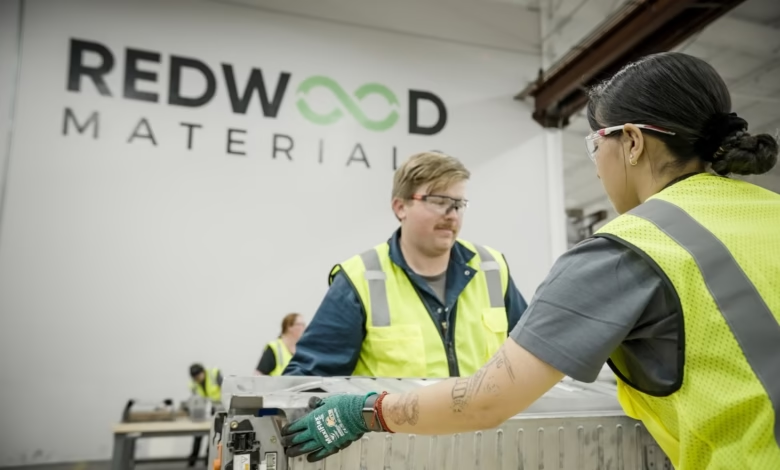GM & Redwood Materials Use EV Batteries to Power Data Centers

▼ Summary
– GM is partnering with Redwood Materials to recycle both new and old EV batteries, repurposing them for stationary energy storage.
– Redwood has already used GM’s second-life batteries in a 12 MW microgrid powering a nearby data center in Nevada.
– Redwood’s energy storage division focuses on reusing EV batteries with remaining capacity, creating grid-scale storage systems often powered by renewables.
– Redwood aims to deploy 20 GWh of energy storage by 2028 and currently recovers 70% of used or discarded U.S. batteries.
– GM’s supply of new batteries to Redwood helps mitigate risks from fluctuating EV sales, while energy storage demand grows steadily.
General Motors has partnered with battery recycler Redwood Materials to repurpose electric vehicle batteries for an innovative new purpose: powering data centers. The collaboration focuses on giving EV batteries a second life by transforming them into stationary energy storage systems.
Redwood’s facility in Sparks, Nevada, now hosts a 12-megawatt microgrid built from GM’s retired and even some new battery packs. This system supplies clean energy to a nearby 2,000-GPU data center operated by Crusoe, demonstrating how discarded EV components can support high-demand computing infrastructure. The setup relies partly on solar power, creating a sustainable loop where renewable energy charges the repurposed batteries before they feed the data center.
The project stems from Redwood’s recent expansion into energy storage, launched earlier this year. Testing revealed that many EV batteries arriving at their facilities still retain significant capacity, enough to justify reuse rather than immediate recycling. By assembling these packs into larger systems, the company helps balance grid demands, storing excess solar and wind power for later use.
JB Straubel, Redwood’s CEO and co-founder, believes this initiative could outpace the company’s core recycling operations. Already handling 70% of used U.S. batteries, Redwood aims to deploy 20 gigawatt-hours of storage capacity by 2028. Their ability to integrate diverse battery types, spanning brands and chemistries, positions them as a leader in the emerging second-life battery market.
GM’s decision to supply both new and used batteries reflects a strategic move amid fluctuating EV sales. While recent quarterly sales dipped slightly, the looming expiration of federal tax credits could trigger a surge. Meanwhile, energy storage installations grew by 57% year-over-year in early 2024, signaling strong demand for solutions like Redwood’s.
This partnership highlights how industries can collaborate to reduce waste while meeting growing energy needs. By bridging automotive and tech sectors, GM and Redwood showcase the untapped potential of EV batteries beyond the road.
(Source: TechCrunch)

